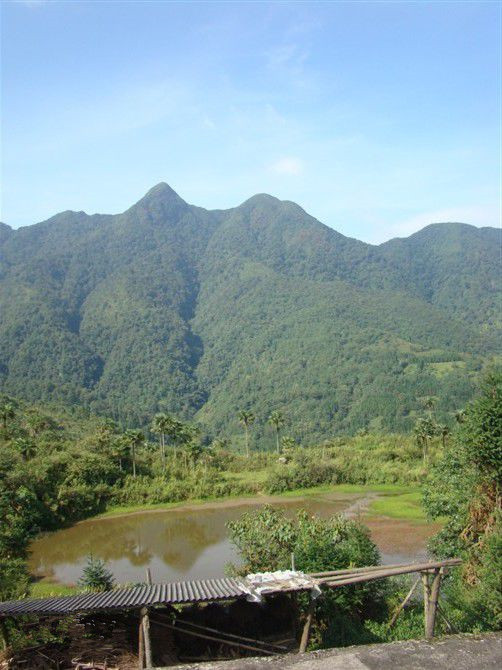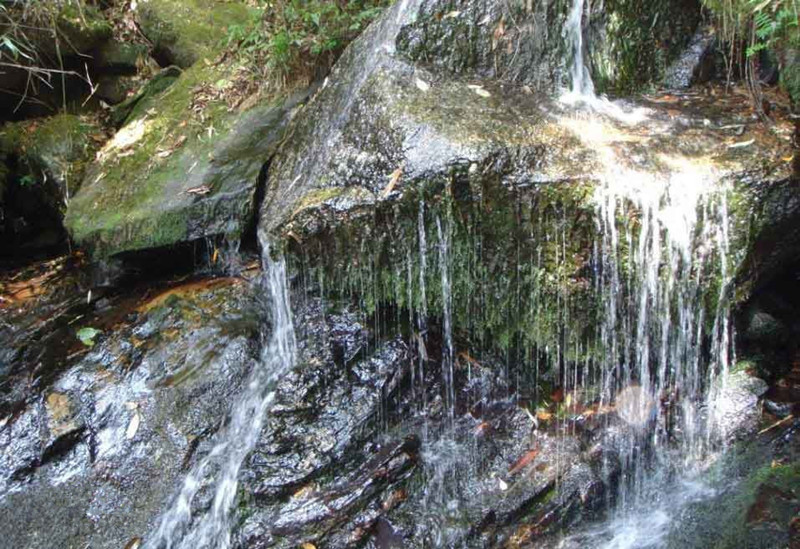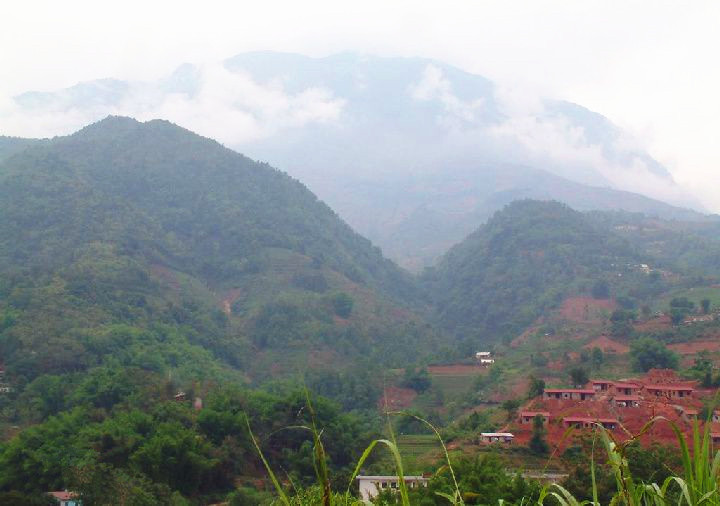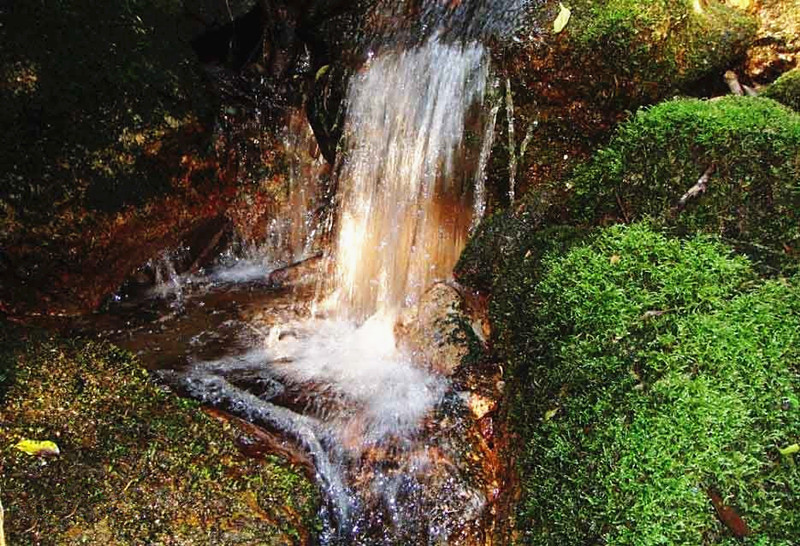
Guanyin Mountain Nature Reserve in Yuanyang County, Honghe
Overview
Guanyin Mountain Nature Reserve (观音山省级自然保护区) is located in the southern part of Yunnan Province (云南省), within Yuanyang County (元阳县) of Honghe Hani and Yi Autonomous Prefecture (红河哈尼族、彝族自治州). It is part of the southern section of the Ailao Mountain Range (哀牢山脉) and serves as the watershed between the Yuan River (元江) and the Tengjiao River (藤条江). The reserve consists of two unconnected areas in the east and west, covering a total area of 16,206.4 hectares, which accounts for 7.4% of the county’s total area. The main focus of the reserve is to protect rare animals and plants as well as natural vegetation.
- Chinese Name: 云南元阳观音山省级自然保护区
- Geographical Location: Within Yuanyang County, Yunnan Province
- Climate Conditions: Tropical monsoon climate
- Attraction Level: Provincial nature reserve
- Area: 16,409.9 hectares
- Type of Reserve: Forest, Ecosystem
Historical Background
- 1988: Established as a county-level nature reserve, covering an area of 16,409.9 hectares, approved by the Yuanyang County People’s Government (元阳县人民政府).
- 1994: Upgraded to a provincial nature reserve by the Yunnan Provincial People’s Government (云南省人民政府).
- 2004: Adjustments to the boundaries and area of the reserve were approved, reducing the area to 16,187.1 hectares.
- 2010: The Yuanyang County People’s Government applied for further adjustments to the boundaries, incorporating Xiguanyin Mountain (西观音山) into the management of the provincial nature reserve; the total area was updated to 16,206.4 hectares, with the eastern area covering 13,892.6 hectares and the western area 2,313.8 hectares.
Geographic Environment
Location and Terrain
Guanyin Mountain Nature Reserve is situated in the southeastern part of Yuanyang County, acting as the watershed between the Yuan River and the Tengjiao River. It extends in a northwest-southeast direction, bordered to the east and south by Jinping County (金平县), to the west by Huangmaoling Township (黄茅岭乡) and Panzhihua Township (攀枝花乡), and to the north by various towns in the county such as Xinjie (新街), Ganyang (嘎娘), and Shangxinjie (上新街).
- Eastern Guanyin Mountain: Geographical coordinates range from 102º48´35″ to 103º10´19″ East and from 22º50´31″ to 23º4´52″ North, covering an area of 13,892.6 hectares.
- Western Guanyin Mountain: Geographical coordinates range from 102º34´1.7″ to 102º41´0.5″ East and from 23º9´27.5″ to 23º12´59.8″ North, with an elevation range of 1,640 to 2,745.6 meters, covering an area of 2,313.8 hectares.
Geological Features
The reserve lies between the Ailao Mountain Fault (哀牢山断裂) and the Honghe Fault (红河断裂). The exposed strata are primarily ancient and include the Ailao Mountain Group (哀牢山群) from the Proterozoic era, with a limited presence of Cambrian and Silurian strata. The dominant rock types include deeply metamorphosed rocks from the Proterozoic and intrusive igneous rocks from the Indosinian period, with sedimentary rocks being relatively scarce. The highest peak within the reserve is Baiyanzishan (白岩子山), exposed as granite from the Indosinian period.
Landforms
The nature reserve is classified as part of the “Middle Mountain Canyon Area of the Southern Section of the Hengduan Mountains” and features a rugged terrain characterized by deep-cut canyons and steep valleys. The watershed formed by Guanyin Mountain separates the Yuan River and Tengjiao River, with elevations generally ranging from 2,600 to 2,700 meters in the northern section and from 2,000 to 2,200 meters in the southern section. The highest point reaches an elevation of 2,939.6 meters, while the lowest point is at 1,270 meters in the eastern region.
Protected Species
Flora
The reserve is home to 1,454 plant species across 708 genera and 196 families, including:
- 1 species classified as National Key Protected Species Level I
- 8 species classified as National Key Protected Species Level II
- 18 species classified as Provincial Key Protected Species in Yunnan
Additionally, there are 3 endemic plant species unique to Guanyin Mountain.
Fauna
The reserve hosts 83 species of mammals, 43 species of reptiles, 38 species of amphibians, and 186 species of birds, including:
- 5 species classified as National Key Protected Species Level I
- 13 species classified as National Key Protected Species Level II
- 22 species classified as National Key Protected Species Level II among birds
Cultural Significance
The area surrounding Guanyin Mountain is inhabited by various ethnic minorities, including the Hani (哈尼族), Miao (苗族), Yao (瑶族), and Yi (彝族). Forests have historically served as essential resources for these communities, underpinning their cultural identity and livelihoods. The stunning terraced fields and unique cultural elements further enrich the landscape, creating a diverse and attractive natural environment.
How to Get There
To reach Guanyin Mountain Nature Reserve, visitors can drive from Yuanyang County, which is approximately a 30-minute journey. Public transportation options, including buses and taxis, are available to the reserve. The nearest major city is Kunming, from where visitors can take a bus or hire a vehicle for the journey.
Travel Tips
- Best Time to Visit: The ideal months for visiting are from late autumn to early spring, when the weather is mild and the scenery is beautiful.
- Clothing: Dress in layers, as temperatures can vary significantly throughout the day and elevation.
- Local Guides: Hiring a local guide can enhance your experience and provide insights into the rich biodiversity and cultural heritage of the area.
- Wildlife Watching: Early mornings and late afternoons are the best times for observing wildlife.
- Respect Nature: Follow local guidelines to preserve the natural environment and respect the cultural practices of local communities.




Location:

 7 Days GolfingTour
7 Days GolfingTour
 8 Days Group Tour
8 Days Group Tour
 8 Days Yunnan Tour
8 Days Yunnan Tour
 7 Days Shangri La Hiking
7 Days Shangri La Hiking
 11 Days Yunnan Tour
11 Days Yunnan Tour
 6 Days Yuanyang Terraces
6 Days Yuanyang Terraces
 11 Days Yunnan Tour
11 Days Yunnan Tour
 8 Days South Yunnan
8 Days South Yunnan
 7 Days Tea Tour
7 Days Tea Tour
 8 Days Muslim Tour
8 Days Muslim Tour
 12 Days Self-Driving
12 Days Self-Driving
 4 Days Haba Climbing
4 Days Haba Climbing
 Tiger Leaping Gorge
Tiger Leaping Gorge
 Stone Forest
Stone Forest
 Yunnan-Tibet
Yunnan-Tibet
 Hani Rice Terraces
Hani Rice Terraces
 Kunming
Kunming
 Lijiang
Lijiang
 Shangri-la
Shangri-la
 Dali
Dali
 XishuangBanna
XishuangBanna
 Honghe
Honghe
 Kunming
Kunming
 Lijiang
Lijiang
 Shangri-la
Shangri-la
 Yuanyang Rice Terraces
Yuanyang Rice Terraces
 Nujiang
Nujiang
 XishuangBanna
XishuangBanna
 Spring City Golf
Spring City Golf
 Snow Mountain Golf
Snow Mountain Golf
 Stone Mountain Golf
Stone Mountain Golf



















